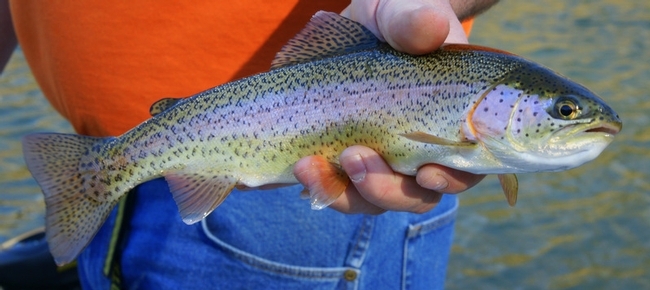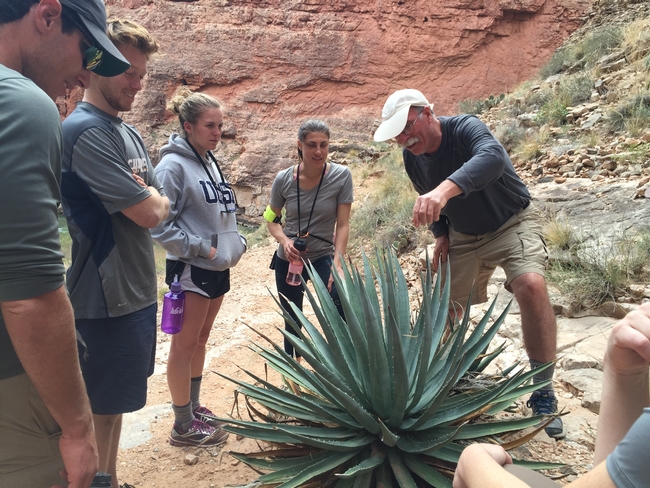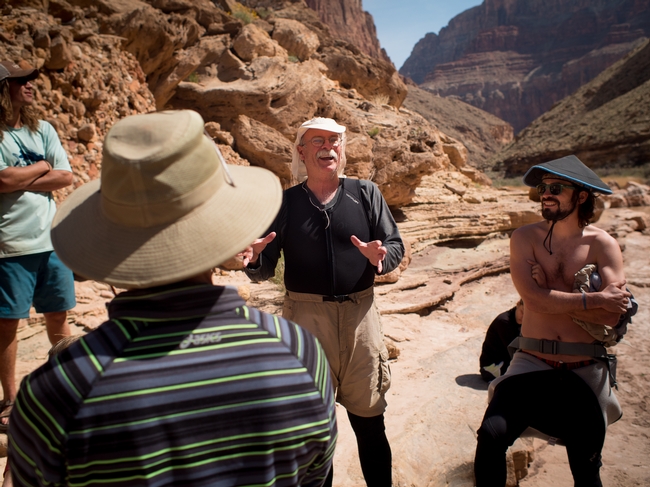Posts Tagged: River
Take a Virtual Tour of the California Dogface Butterfly Habitat
Ever seen the California state insect, the dogface butterfly (Zerene eurydice), or toured its celebrated habitat near Auburn on...
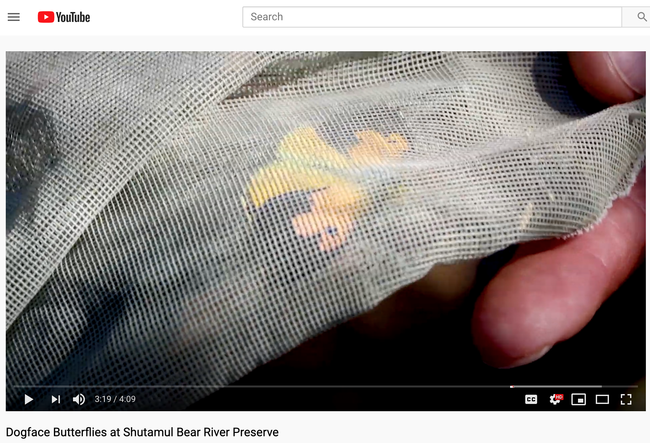
This is a screen shot from the Placer Land Trust (PLT) video on the California state insect. Bohart Museum associate and PLT guide Greg Kareofelas had just netted the butterfly in a display-and-release activity.
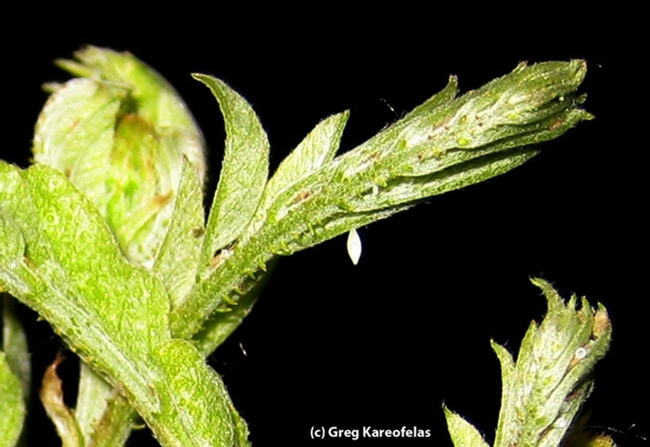
This is the egg of the California dogface butterfly, Zerene eurydice. (Photo by Greg Kareofelas)
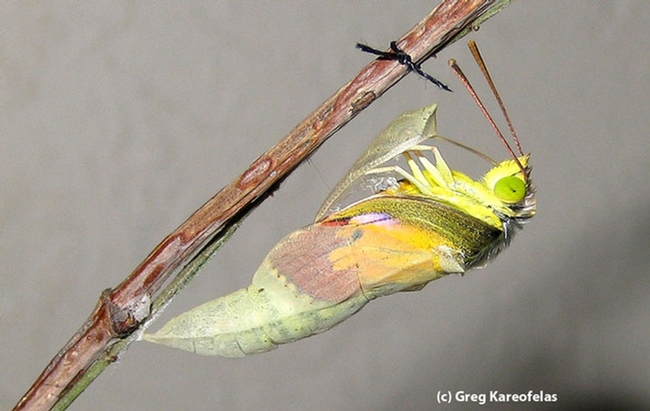
This is the chrysalis of the California dogface butterfly reared by naturalist Greg Kareofelas of Davis. (Photo by Greg Kareofelas)
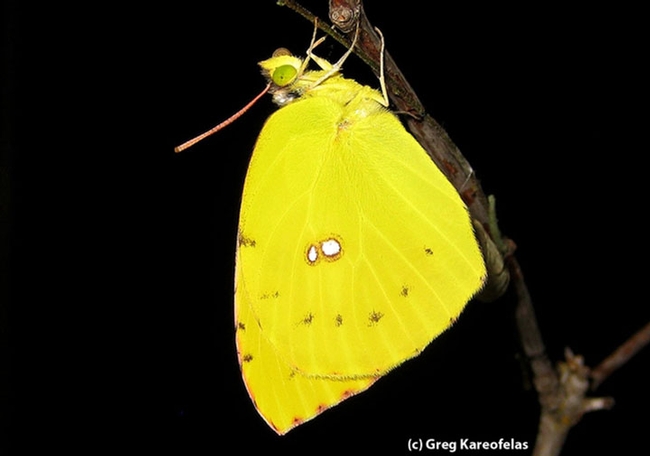
An adult California dogface butterfly reared by Greg Kareofelas. (Photo by Greg Kareofelas)
LA's concrete river revitalization unlikey to create habitat for steelhead trout
The city of Los Angeles is preparing to remove parts of the LA River's concrete lining, but that may not be enough to bring back native fish, reported Zoie Matthew in Los Angeles Magazine.
"It's hard to do piece-by-piece restoration projects for things adapted to river and stream systems. And it's impossible for steelhead," said Sabrina Drill, UC Cooperative Extension natural resources advisor in Los Angeles and Ventura counties.
Steelhead need a continuous, rapidly flowing channel to complete their life cycle. Other native fish, such as the Arroyo chub, will need gravel, plants, sediment and pools to be restored.
"Ecological heterogeneity is really important," Drill said. "Fish tend to need different kinds of habitat."
Warmer water temperature is another concern. The river lacks trees and plants to shade the water and concrete soaks up the sun's warmth, creating a habitat unsuitable for natives.
Drill said some of the new fish in the river have favorable characteristics. Mosquito fish help with pest control and carp make for good fishing.
"Part of (the river's) role is to provide low-income, underserved communities with a place to access nature, see native birds, and increase public health by having a safe area to walk and fish," Drill said. "I think there's value there too."
Rachael Long: A Boy, a Bat, a Coyote and a Crow
It doesn't get more real. Yolo County Farm Advisor and children's book author Rachael Freeman Long remembers telling her son stories about an...

Pallid bats, shown here hanging upside down, were featured at Rachael Long's presentation on her second book, "Valley of Fire,"at the Avid Reader, Davis. She will speak on her latest and last book in the trilogy, "River of No Return," at 1 p.m., Saturday, Aug. 20 at the Avid Reader. (Photo by Kathy Keatley Garvey)

Rachael Long, in a presentation at the Avid Reader, shows a bat house. (Photo by Kathy Keatley Garvey)
Canyon Classroom: Exploring the Grand Canyon's plants along the Colorado River
While some people were spending spring break at the beach or catching up on their Netflix queue, students from the EcoGeoMorphology class at UC Davis were rafting down the Colorado River at the bottom of the Grand Canyon.
[Join the journey: UC Davis Grand Canyon interactive website, http://grandcanyon.ucdavis.edu.]
The class split in two groups for the 225-mile river journey. On March 10, the group embarked from Lee's Ferry, rafting 90 miles before hiking to the rim on March 19 along Bright Angel Trail. They passed the second group on their way down the same day. They traveled the remaining 135 miles to the next road access at Diamond Creek.
The class is conducted during winter quarter by the Department of Earth and Planetary Sciences and the Center for Watershed Sciences, in partnership with Campus Recreation's Outdoor Adventures. While its first trip to the Grand Canyon was in 2003, students have taken this optional trip for each of the past five years.
Among the class' instructors this year was UC Davis plant sciences professor and UC Agriculture and Natural Resources affiliate Truman Young.
‘There's nothing quite like this'
The trip is the physical and visible representation of what the class is all about: Geologists, hydrologists and ecologists learning to communicate with each other and the public. It's a skill necessary in real-world careers, where working on environmental problems requires a variety of expertise that isn't always taught in siloed classrooms.
“I'm not a geologist myself, but you only have to look left to right at any moment, and there's nothing quite like this,” said Young while floating down the river, taking in the cliffs rising around him.
The classrooms are pretty spectacular: red walled caverns, ancient Puebloan ruins, rock formations and fossils, the river itself. It's the students' textbooks brought vividly and tangibly to life.
Along the way, Young described the life cycle of Century plants; explored the plants sprouting around Vasey's Paradise, a natural spring; and rubbed scale insects off prickly pear plants to expose the crimson dye they produce. At each step, he casually prodded the students to consider what it means to have a river running through a desert.
Time travelers
The group was unplugged, off-grid, and literally immersed in the river, rocks and landscape.
Geologists, ecologists, and hydrologists helped teach each other about rocks, plants, fish and flow rates—usually informally as they scrambled up a trail or gazed up at the vertical cliffs slowly floating past.
They slept each night under a sky bright with forgotten stars, to the sounds of softly strumming guitar and the nearby rushing river.
Over the course of eight days on the river, they traveled through about a billion years of geologic time.
Young had been on the trip once before, two years ago. He said it was just as impressive the second go-around.
“It's actually more spectacular on the second pass, which surprised me,” he said. “Just the magnitude and the grandeur of it, all that stuff. It's just more.”
Heavy rains this winter may help native fish in the LA River make a comeback
Biologists believe a high volume of water flowing through the Los Angeles River this winter due to El Niño rain will favor native fish, reported Louis Sahagun in the Los Angeles Times. Native species - who evolved in river systems prone to sudden torrents of water, mud, bolders and debris in winter and pools and damp patches in summer - main gain an edge when the river rages.
Currently, the fish population in the river is almost entirely non-native. Released as bait by anglers, dumped by the city to eat unwelcome species, and aquarium fish set free by their owners now populate the river's waters.
The forecast heavy rains during the 2015-16 winter present an opportunity to determine whether nonnative fish will be washed out of the river and into the Pacific Ocean, giving native fish a new chance to become established.
"If we are ever going to fully understand the ecology of this river, and prospects for the return of species that evolved in it, we have to know first what's in it now, and how well those creatures do in extreme conditions," said biologist Rosi Dagit of the Resource Conservation District.
UC Cooperative Extension natural resources advisor Sabrina Drill was among a group of biologists and volunteers who surveyed the fish in the river in late November with seines, dip nets and rods and reels. After six hours, the team caught about 3,000 talapia, two dozen crayfish, a few hundred mosquito fish, one aquarium species and two Asian freshwater clams.
The research is funded by the Friends of the Los Angeles River.


